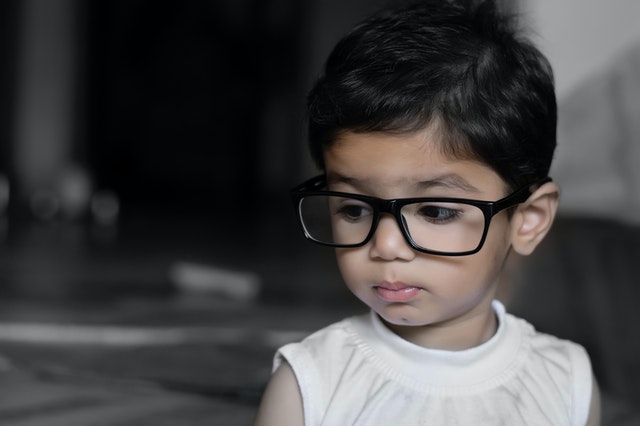What is Orthokeratology?
Orthokeratology, Ortho-K (or sleep-in or dream vision) lenses have been available for a few decades. These are rigid lenses that are worn overnight. They apply mild influence to gently reshape the front surface of your eye (the cornea) to temporarily correct myopia. The effect lasts a day (sometimes two) before short-sightedness returns, therefore they need to be worn every night. This means that the vision can be clear during the day without the burden of glasses or contact lenses.
How can OrthoK help a child with myopia?
Excitingly, after using this type of correction on children with myopia, an unexpected benefit soon become clear. This type of lens slows the progression of myopia in children. This effect had been observed over a decade ago which has led to comprehensive investigation and study at the effect and the suitability for this type of correction in children and as a reliable and safe method for slowing the rate of change of myopia.
At Central Vision Opticians (UK Children’s Contact Lens Practice of the Year 2018, Contact Lens Practitioner of the Year 2019 and 2020) we strive to ensure your child’s vision receives the highest care and attention and offer you the latest, safest and evidence-based practice.
If your child is short sight (myopic), there are now several safe and effective ways to correct their eyesight whilst halting the progression of this condition. Myopia can prevent a child from seeing the board at school thus being unable to learn as effectively as their classmates. Wearing glasses has been shown to hinder a child’s ability to play sports. It even has a detrimental effect on their confidence and experience socially. I should know, I’ve been short-sighted since the age of 12 and suffered these difficulties. Thankfully we now have a range of options available to help your child.
Orthokeratology has now been scientifically shown to reduce the rate of progression of myopia by between 40-50% in multiple reliable studies.
How do these lenses slow the deterioration in children who have myopia?
The exact mechanism is believed to be an optical effect of the re-shaping of the cornea where some of the light reaching peripheral areas of the retina (as opposed to the central part of the cornea responsible for clear vision) is detected by the eye. This peripheral light is focused differently with Orthokeratology compared to glasses and traditional contact lenses. The unintended but ultimately beneficial effect of this is too slow the rate of growth of the eyeball thus slowing the rate of change in myopia. The growth and increase in the size of the eyeball that is a major factor in determining the rate of change of myopia.
This increase in eyeball length can leave the eyes of a person with myopia to be more prone to several complications later in life including damage to the retina and glaucoma.
Are Ortho-K lenses safe?
This has been one of the most important questions and concerns that we receive from parents and patients. In the past, there have been reports and studies about the increased risk when wearing contact lenses overnight. However, there have been significant improvements in technology, including lens materials, designs and cleaning regimes that mean these lenses can be used safely and effectively in children with negligible adverse side effects.
There are some very important considerations to ensure that this method of myopia control is safe:
- The skills and experience of the practitioner make a large impact on the success of Ortho-K and myopia control.
- Using the right technology for measuring the cornea, advanced designs of contact lenses combined with the latest materials.
- Make sure that eyes are examined at the regular intervals as directed by your eye care expert.
- Replacing the lenses at regular intervals (normally every 6 months) reduces the rate of complications.
- Wash hands before taking the lenses in and out and ensure they are cleaned and stored properly reduces the risk of complications.
- Another potential limitation is the range of prescriptions suitable for controlling myopia is lower with OrthoK compared to soft lens options.
These lenses work by subtly influencing the shape of the front surface of the eye, the cornea. In some cases, the cornea may have a curvature where ortho-K is not suitable. This can be determined by the measurement and skill of the practitioner.
What are the risks of Orthokeratology?
As with all contact lens wear, there is a very small risk of infection. With good hygiene, effective storage and regular replacement of lenses, this risk is no greater than any other type of contact lenses. In fact, children have been shown to have one of the lowest incidences of contact lens-related problems.
What are the benefits of Orthokeratology?
There are some positive benefits to this option for myopia control.
Some children enjoy playing certain sports where contact lenses can’t be worn, such as swimming. Ortho-K is an excellent option for these sports.
It is an effective solution for people who need clear vision without glasses or contact lenses.
Ortho-K is a completely reversible option. Once lenses wear is stopped, the cornea will return to normal over a period of about a month.
How are these lenses fitted?
The fitting of contact lenses needs careful consideration and measurements using more sensitive and accurate equipment than you would normally find at an optometry practice. The lenses need to be the most advanced, computer-controlled designs and fitted under the supervision of an experienced practitioner.
Firstly, we need to make sure that your eyes are healthy and able to manage overnight wear (most people’s eyes are fine)
The most important piece of equipment is called a corneal topographer, it makes an accurate image of the cornea. These dimensions are then used by sophisticated software to degenerate the design and structure of a bespoke lens that fits perfectly with the shape of your cornea to give the desired change in shape.
We teach you how to insert and remove the lenses by yourself and then let you take them home and wear them overnight. We then examine the effect the next morning. We check to ensure your eyes are healthy, measure your vision and the shape of your cornea. We may change the design of the lenses if the change in your cornea needs adapting.
Another follow-up after another week of wear will make sure that your eyes and vision are responding well to this method of correction. A subsequent check-in necessary after 3 months.
After this point, regular 6 monthly follow-ups (along with 6 monthly replacement of lenses) will help to make sure that your eyes are staying healthy and the vision clear.
What are the best options for myopia management?
In the UK, Orthokeratology and daily disposable contact lenses for myopia management have both been shown to provide a significant and long-lasting reduced in the rate of change of myopia whilst being a safe option for children to wear.
There are some treatments such as vision therapy, which involve exercises to improve how well the eyes focus and work together because children with myopia are more likely to demonstrate difficulties in these areas. Although exercises have not yet been conclusively proven to help reduce the rate of change, in our experience some children could benefit. For those who find suffer from eyestrain or visual fatigue, they will make tasks that involve prolonged focusing such as reading easier.
Another option that has been implemented in the far east over the past few years, and is emerging in the UK, is the use of Atropine eye drops. These drops are like the “belladonna” used by ladies to enlarge the pupils of their eyes during renaissance Italy. The exact mechanism of action isn’t fully understood but they do reduce the rate of change in children with myopia. There are some concerns about this method because there are side effects of blurry vision in some concentrations and dosages. There is significant debate about the optimum dosage and worryingly, atropine drops do not influence the rate of eyeball growth, which means that people who are short-sighted will have a higher risk of myopia related complications with their eyes in older age compared to wearing special contact lenses.
The importance of a complete Myopia Management Programme
Myopia management MUST always be combined with an assessment for visual skills, this is a significant factor in myopia. Many practitioners are attempting to treat myopia without addressing all of the causes, such as weak eye muscles or poor coordination between the eyes.
How do I book an appointment for my child?
Call us now on 020 8343 1122 to arrange an appointment.


